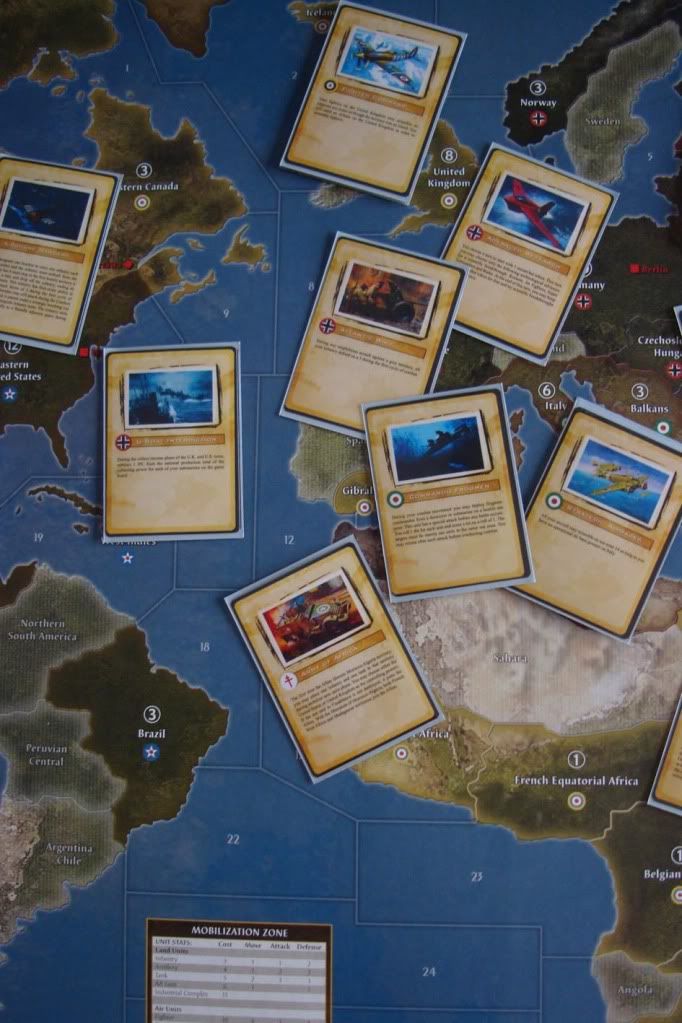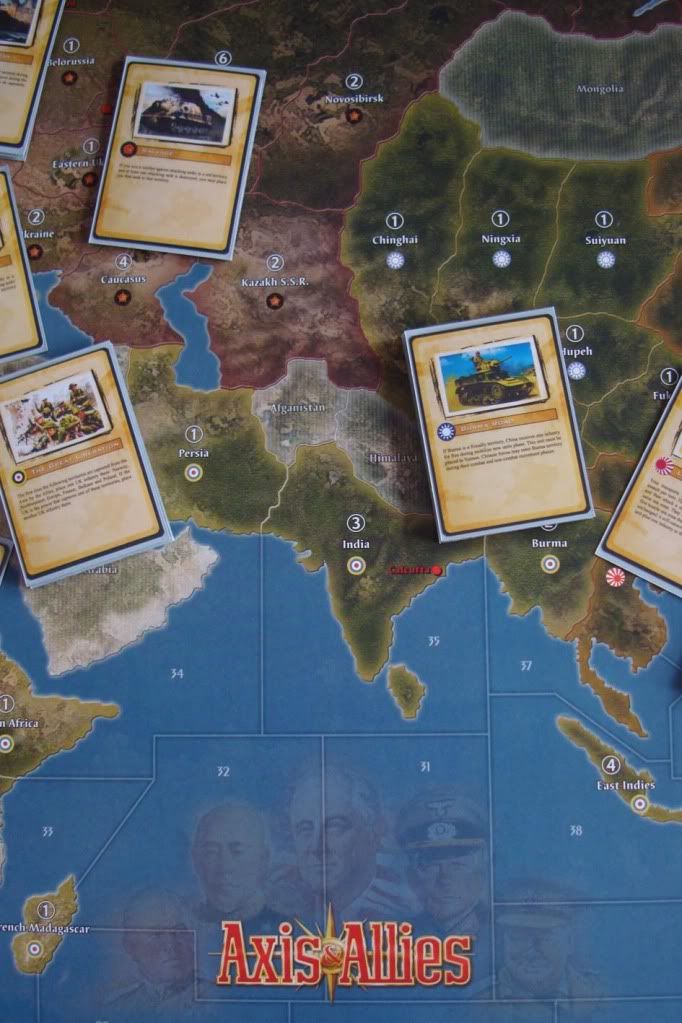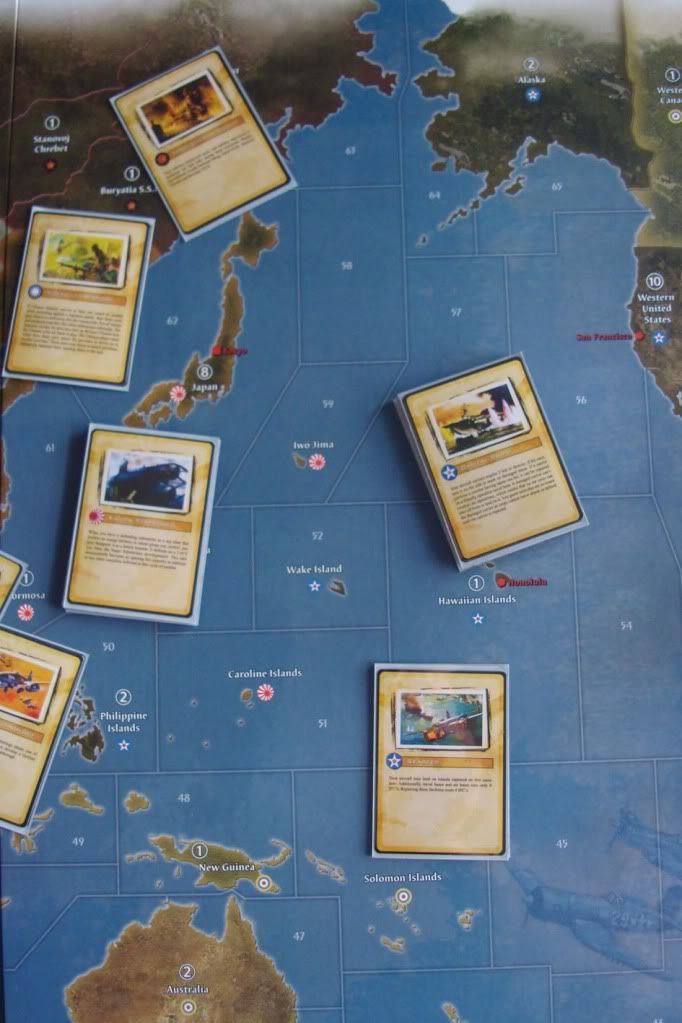@squirecam:
@axis_roll:
@squirecam:
And what if you believe (as you stated earlier) that 1 unit is a normal bid, but the IC is much better than a bid unit. Do you get to the point where UK gets an IC, but gives the axis IPC??
And dont you see the inherent problem in that ??
Let me correctly understand what you are saying.
It seems that you are saying that an Axis Player would be so confident that they could give UK a free (albeit limited) IC in either India or Australia at no cost. Then what’s the next bid…. well then the allies would be getting IPCs, yes, like a normal bid.
I do not think that the axis will be giving away a FREE limited IC, let alone giving units to the allies.
Or maybe you didn’t follow my bid example correctly?
I was discussing the situation where 1 INF is an “equal” bid, and how a 1/2 IC can be perceived as better than that bid. Thus, by allowing the 1/2 IC (depending on how much is paid for it within limits), you are not equaling the bid, but switching the advantage from axis to allies.
In your bid example, the allies are paying less and less for an IC. But what about if you believe the IC is too much of an advantage. Do you eventually give the axis a bid to compensate??
If I am the Bidding for the axis and I think the IC is too much of an advantage, I would bid to give the IC to the allies at $20! who would take the allies at that point?
@squirecam:
Also, lets say I DONT want an IC. I’m not going to put one in India anyway. But I certainly dont want to give you one.
Again, you miss the whole idea of the limited IC idea. yes, it HAS to go to India or Australia (or east Canada, but that option only is viable with the entire AA50 Strategic rule set)…
BUT THAT’S THE POINT! It is not JUST ABOUT BALANCE, it’s about strongly encouraging UK to fight Japan.
Of course, you can always NOT buy the IC at all as well.
But I will continue with your discussion.
@squirecam:
You “win” the bid. And say I can have the IC at $8. This does NOTHING for me, as I wont be playing a pacific campaign, nor do I believe in putting one in Canada. basically, you’ve prevented me from having any bid units.
If you don’t want the allies with an $8 IC, bid for the axis lower.
@squirecam:
What are my choices? Play without a bid? (Even if I think 8 is a proper one)? Bid less and give you the IC you want anyway (when you will just keep lowering the cost yourself) ??
Basically, what is the reasonable “value” of this IC. It is certainly not = to a 1 INF bid. Which causes a different advantage in the game. Which is what I was getting at earlier…
I don’t think you will reach the point where NO ONE will take the allies with a free limited IC.
However, I ALSO think the bid would never get that low.
So you’re inherent problem doesn’t exist.
@squirecam:
Now does Axis get bid units to compensate?? Do Allies get their IC but Axis get 2 INF??
Now do you see the inherent problem???
I can see your thinking, but what you describe is merely a concept/theory. It doesn’t play out in the real game play situation. So I do not think a problem exists. Who would not take a free {limited} IC? Worse case is placing that in Australia, adding 2 inf for a turn or two there. Japan would probably never take it then. That alone is a $4 swing. Now is that OVER powered for the allies. I do not think so.
before you reply, I will again, continue your discussion and play along to give you another reason why the bid would never go ‘negative’. No player in their right mind would EVER give the axis a bid in 1941 with NOs. So, I guess, they would be ‘FORCED’ into taking a free IC in India/Australia.
I have a feeling the bid mechanism will determing the proper value of the limited IC, with a zero being a realistic limit.









